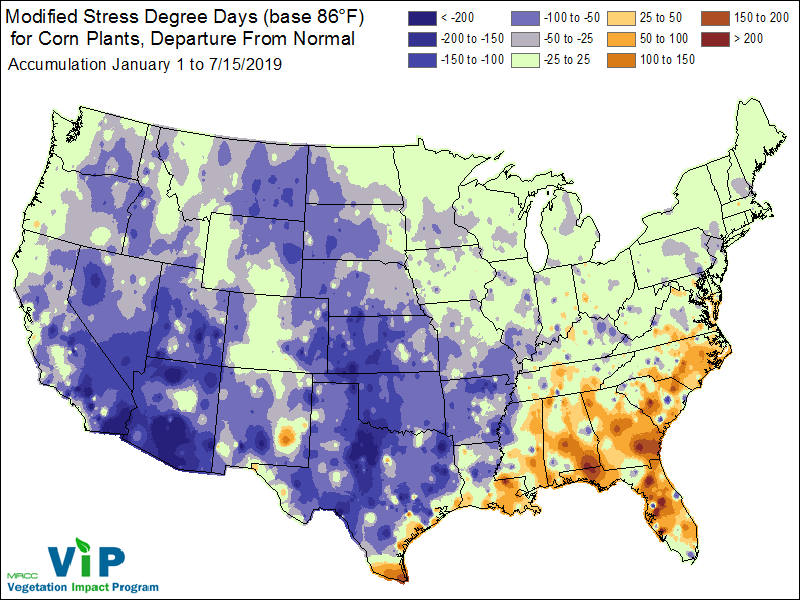While the remnants of Hurricane Barry brought some much-needed precipitation to the state, the next few weeks look to be on the dry side. Temperatures are also expected to be warmer than normal, so heat stress may become an issue for plants and animals. The Midwestern Regional Climate Center’s (MRCC) Vegetation Impact Program (VIP) provides a modified stress degree-day (mSDD) tool (https://mrcc.illinois.edu/VIP/indexSDD.html) for corn plants that accumulates degree-day units when temperatures exceed 86°F. Modified SDD departures indicate most of Indiana to be near normal (Figure 1), however, excessive heat is in the forecast so mSDDs are expected to accumulate quickly.
Drought-like conditions are developing, particularly in northern Indiana. While the excessive spring and early-summer rains saturated soils, the sudden dryness is causing some stress where plant roots were not able to deeply establish. These changing weather conditions could leave plants more susceptible to external stresses from pests and diseases.
Fun Fact: Indiana experiences an average of 7-14 days with a Heat Index greater than or equal to 90°F and 3-7 days with a Heat Index greater than or equal to 100°F (source: MRCC Heat Index Climatologies; https://mrcc.illinois.edu/clim/heatIndex/index.jsp) So far in 2019, the Indianapolis weather station has recorded 14 days with a Heat Index over 90°F and 2 days with a Heat Index at or above 100°F.



